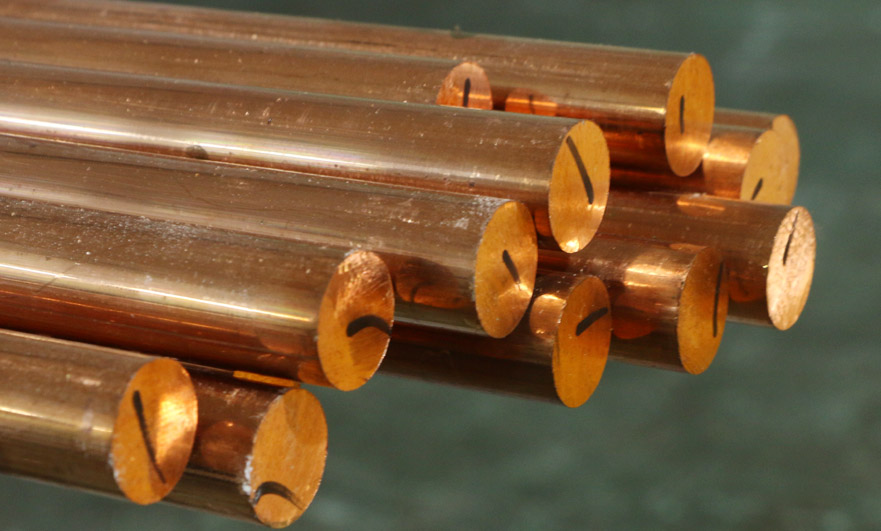15 years one-stop China custom CNC machining parts factory

Hey there I’m VMT Sam!
With 25 years of CNC machining experience we are committed to helping clients overcome 10000 complex part-processing challenges all to contribute to a better life through intelligent manufacturing. Contact us now
 146 |
Published by VMT at Jul 19 2022
146 |
Published by VMT at Jul 19 2022

The most commonly used copper and its alloys are: pure copper, brass, bronze, etc. The appearance of pure copper is red-yellow. In the air, the surface will form a purple-red dense film due to oxidation, so it is also called red copper. The electrical conductivity and thermal conductivity of pure copper are very good, second only to silver. It also has high chemical stability and good corrosion resistance in the atmosphere and fresh water. Usually, in a humid environment, it is easy to generate basic copper carbonate (commonly known as patina).
Pure copper has good plasticity but low mechanical strength. Industrial pure copper often contains a certain amount of oxygen, sulfur, lead, bismuth, arsenic and other impurity elements. Small amounts of arsenic can increase copper's strength, hardness, and reduce electrical and thermal conductivity. The rest of the impurity elements are harmful. Pure copper is mainly used to manufacture wires, electrical components and various copper materials in industry. Among them, oxygen-free pure copper is used as electric vacuum components.
Brass is an alloy of copper and zinc. When the zinc content of brass is below 32, the plasticity is good, suitable for cold and hot processing, and toughness is strong, but the cutting performance is poor. In order to improve some properties of brass, a small amount of other elements are often added, such as aluminum, manganese, tin, silicon, lead, etc. This brass is called special brass.
Brass is used in thermal power plants to make heat exchange tubes for steam turbine condensers. For example, the N-11200-1 type condenser copper tube material used in the domestic 200,000-kilowatt steam turbine is: generally 77-2 aluminum brass in the pure seawater area, and 70-1 tin brass in the fresh water area.
Bronze originally refers to copper alloys with tin as the main additive element. In modern times, all copper alloys except brass are included in the category of bronze, such as tin bronze, aluminum bronze, and beryllium bronze.
It is also customary to divide bronze into two categories: tin bronze and Wuxi bronze. It is mainly used to manufacture corrosion-resistant and wear-resistant parts, such as shaft sleeves, thrust bearing pads, etc. Due to the limited resources of tin, some other alloying elements have been widely used in the industry recently to replace tin. The more common ones are aluminum bronze, lead bronze and beryllium bronze.
Aluminum bronze has better corrosion resistance than tin bronze, and is often used in the manufacture of corrosion-resistant and wear-resistant parts, such as gears, worm gears, bushings, etc. Beryllium bronze is mainly used for important springs and elastic parts, as well as electrical contactors, electrodes for electric welding machines, clocks and clock parts, etc.
Many methods have been used to protect copper, the most important of which is the great progress in research and development using various corrosion inhibitors. At present, Japan has more and more extensive research on copper and copper alloy surface protection technology, especially in the aspect of building decoration materials, and has achieved a lot of successful experience. Domestic work mainly focuses on surface polishing and anti-discoloration treatment of copper products, and some progress has also been made.
The process flow of copper and copper alloy surface passivation is: degreasing - hot water washing - cold water washing - pickling (concentrated hydrochloric acid or mass fraction of 10%, room temperature 30s) - machine washing - strong acid washing - water washing - surface conditioning (30-90g /LCrO3, 15-30g/LH2S04, 15-30s)->washing-pickling (112804 with a mass fraction of 10%)->washing-passivation-washing-drying.
The unqualified passivation film during the passivation treatment of copper and copper alloys can be removed by soaking in H2S04 solution, concentrated hydrochloric acid or 300g/L sodium hydroxide solution with a mass fraction of heat.
Ready To Start Your Next Project?
Get Instant Quote

Request a Free Quote
Send us a message if you have any questions or request a quote. We will get back to you ASAP!